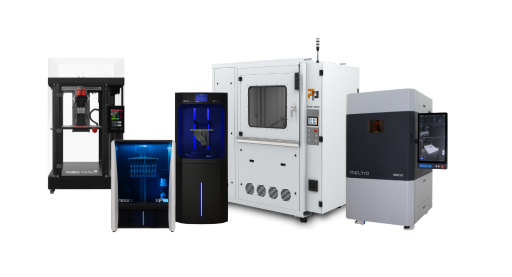3D printers
High quality 3D printers

Order high-quality 3D printed parts now at PartsToGo!
3D Print Now!

Series production with high quality and quantity

Manufacture high quality metal components

High resolution components in all quantities

High quality components without support structures

Wide range of known materials

Ideal for a variety of indications

For the completion of your components

Production cells enable series production of high volumes

Fast data processing and successful quality management













Sorry, there are no results for this combination of filters. Choose another combination of filters.
To ensure that all requests are handled promptly and completely, we ask that you submit all support requests through our support portal.
To the service portalDo you need assistance with your project, do you need advice or a sample part that we can send you?
Send Email
Product development is of immeasurable value in the lifecycle of any product. Prototyping, testing, innovating and debugging are essential to creating the right product for the right market.
3D printing represents the perfect choice at this stage of the product lifecycle. By producing functional prototypes quickly and cost-effectively, 3D printing offers the ability to streamline the design and development process. As a result, it helps create products with higher standards while maximizing productivity and profitability.
Whether it's speed, realism or durability, 3D printing has changed the way products are efficiently manufactured and perfected.
The ability to bring conceptual design, prototyping and even tooling in-house drastically streamlines the typical product development workflow.
It allows for both better design and testing of properties as well as increased speed.
No more long transport routes and delivery times and no more dependencies on external manufacturers, thanks to the technology of 3D printing!
The cost efficiency of Additive Manufacturing is one of its greatest advantages. With traditional options or outsourcing the creation of models, prototypes and various product variations the costs can quickly add up.
The 3D printer may be a costly investment at the beginning. However, with the ability to save up to 70 % of production costs, the return on investment is achieved in no time!
Through lower costs and less time involved in production there are more options for designing. This allows designers to make multiple variations in the same amount of time, perform tests and corrections on them and finally settle on the best of these variations.
3D printing offers the opportunity to have more freedom in design, more time for extensive testing, and more chances to use creativity!

3D printing is one of the best tools for product development. It opens a world of possibilities for building concept models and functional prototypes, reduces costs and waiting times, and enables designers to find better solutions and test their designs in real time!
Cookie settings
We use cookies to provide you with the best possible experience. They also allow us to analyze user behavior in order to constantly improve the website for you. Privacy Policy